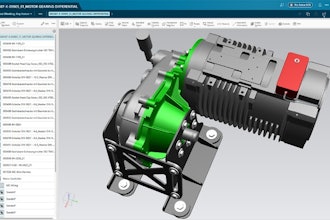
In the world of manufacturing applications you will often hear some IT groups espousing a “best-of-breed” approach to architectures. The theory is relatively simple. If I divide my system needs into logical functional sets of capabilities and then choose the market leader associated with those respective functions, then by definition, I should create the best possible solution. This simple and seemingly obvious approach may not always yield the best results.
Advocates of a best-of-breed software approach will espouse a number of potential advantages and associated benefits:
- Purpose-built solutions deliver directly to a set of well-established functional requirements.
- Best-of-breed vendors focus on their core functions and users should expect the best possible coverage of those requirements.
- The individual best-of-breed offerings by definition align with a focused subset of the implementation organization. This can result in a more efficient training process to the primary users and a shorter time to value.
- The individual best-of-breed offerings can be considered less risky in terms of under-serving the respective user communities with a higher probability of community acceptance and adoption.
- Best-of-breed solution providers often deliver more frequent and pointed enhancements than broader, generalized offerings.
- Many best-of-breed solutions also tout best-of-breed integration points that are intended to allow the interconnection with other functions. Vendors of a focused slice of functionality to recognize that coordinated fit is an imperative.
Cautionary Tales
Managing the functionality needed to address the entire enterprise is challenging. User communities and their specific goals can be diverse. Functionality overviews can be represented with a conceptual diagram that looks a little like a Venn diagram with each function depicted as a weighted circle. Inevitably the intersection between the respective functions may even be depicted in true Venn diagram fashion with overlapping circles.
The idea being the bulk of functionality for each respective function is contained in the primary area of the circle. The overlap between circles is usually shown in a calm shaded gray. This depiction gives the impression that all the team has to do is slide one circle over the other to provide a solution of shared intent. At best this is false advertising as this intersection may be more complex, more fragile and more aggravating than the entire balance of the application.
The contours of most applications and their intersections are not smooth symmetrical arcs that are implied by circles. Most are jagged edges that have grown from multiple revisions and incremental developments. Sliding these kinds of systems in an attempt to overlap with an intersecting circle would most likely pop it like a symbolic balloon.
The successful integration of the functions is a primary concern, but not the only concern with a best-of-breed approach.
Data management is the pinch point. Each of the best-of-breed applications has achieved that success by delivering focused and robust solutions to the problem at hand. That level of focus results in a bit of a center-of-the-universe approach to data management. All aspects of the application are managed using integrated configuration tools. This serves their customers and their application extremely well as a standalone solution.
It can be challenging to develop data integration of two best-of-breed solutions that both consider themselves to be masters of overlapping data structures. A classic example for manufacturing enterprises is the connection between Product Lifecycle Management (PLM) and Enterprise Resource Planning (ERP). PLM considers item id to be the defining element to their delivery of design and revision control of the product. ERP considers item id to be the defining element for the procurement of material and the creation of production orders. There are data structures that are unique to each respective application, but plenty of overlapping data elements. Even the best defined API’s will require significant effort to establish a tenable, sustainable connection.
Fragility is a recurring cost. Establishing the data model and the integration is never a one-time chore. One of the benefits of best-of-breed applications is the frequent enhancements and added capability. Every change of the respective applications can be a potential break point in the cross-system integration. A generalized cross-application approach built on a singular platform may offer more resilience to application changes.
Frankenstein can be a modern tale. Mary Shelley’s legendary monster was delivered to the world just over 200 years ago. Admittedly the analogy is not perfect as each best-of-breed application should be a bit better than expired body parts. However, there can be concerns that the aggregation of even the best parts may not deliver the best whole. In some cases this concern can be overblown with the focus on issues like a common interface or look and feel of the applications. This concern is only relevant if the user community of the best-of-breed solutions actually cross over. There is less concern about the cosmetic commonality between the user interface presented to an engineer for PLM and the app that is accessed by shop floor maintenance personnel.
There's always a price to pay. A best-of-breed approach may not be feasible due to cost alone. Best-of-breed applications may be able to justify premium pricing in the market space. Budgets rarely allow for maximum spend and eventually the best-of-breed shopping cart will need balance. Not all applications are equal in importance to the enterprise. Compromises will be made in virtually every case.
Selecting a top-tier “best-of-breed” ERP may result in the use of its extended capability for CRM rather than selecting a completely distinct CRM offering. It is unlikely that this extension will have all the bells and whistles of the best-of-breed alternative. However, it may address the core requirements and provide adaptability to accommodate many extras without the challenges of stitching together separate systems.
A best-of-breed approach must consider both the priorities of the overall enterprise and the challenges of stitching these solutions together. It is critical to remember that the API capability and adaptability of the individual applications can be as important as the coveted application functionality.
Glenn Graney is the director o high tech industry at QAD.






















